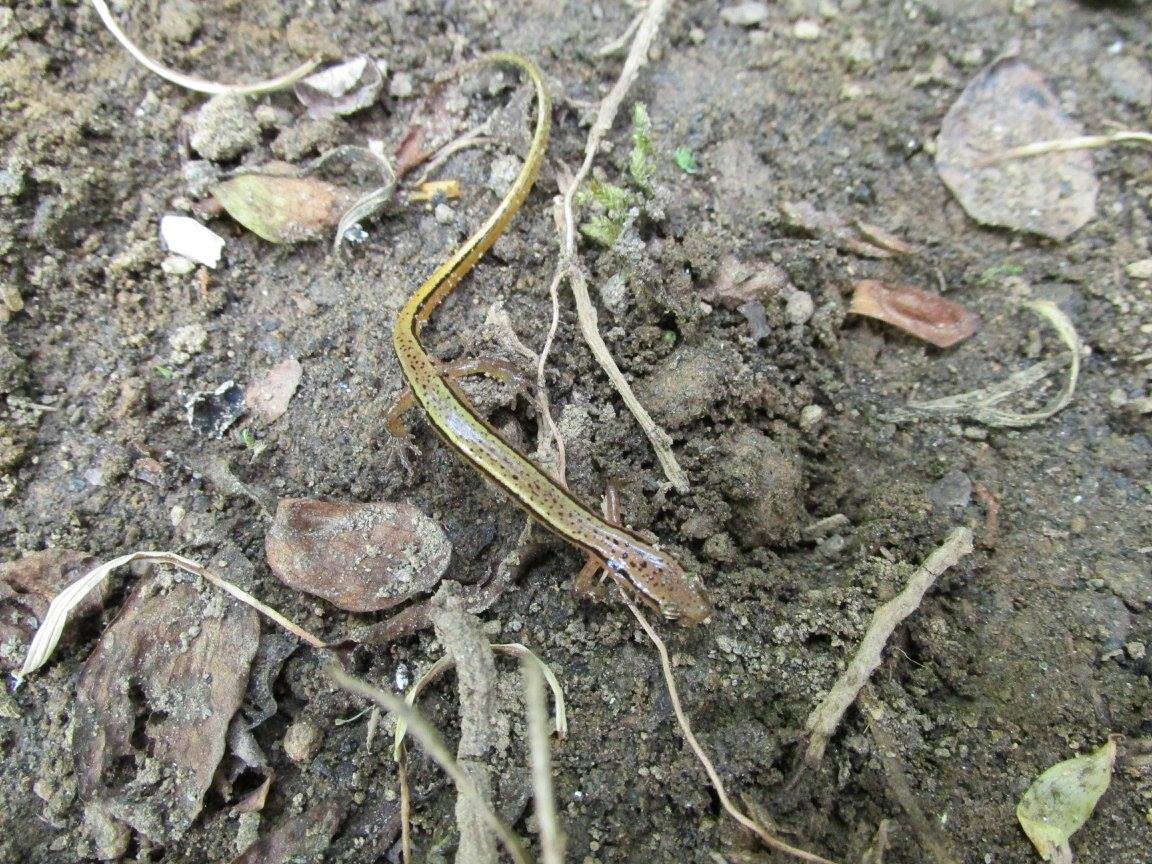Herps (Reptiles and Amphibians) of North Carolina Part II
Here are the six locations I traveled to:
- Cullowhee, NC
- Great Smoky Mountains National Park
- Highlands, NC and Dry Falls
- Nantahala National Forest, Sugarfork, NC
- Cashiers (near Highlands) NC
- Canasuaga River, TN
Part I covered Cullowhee, NC. This post will cover the salamanders I saw in the Great Smoky Mountains National Park.
Great Smoky Mountains National Park
First, to set the scene. Of course, this Park is astonishingly beautiful. Here is the path we went down after driving to the top:
Alright, enough scenery! On to the salamanders!
The first is the Red-Cheeked Salamander, Plethodon jordani. These salamanders are aptly named, as you can see.
Here are some larvae we found. Larvae are salamanders that have not metamorphosed yet. They breathe through gills like fish do, and so must stay submerged. Larvae are notoriously hard to identify. Our professor thinks the top larvae is a Eurycea sp. and the bottom a Desmognathus sp.
Here is a big salamander, compared to the rest we saw (nothing like a Hellbender, though!) This is a Black-Bellied Salamander, Desmognathus quadrimaculatus.1
Here is a picture for scale. Not how dorky I look with my awesome nerd hat!
This next salamander is much smaller than the Black-Bellied Salamander. It is the Blue Ridge Two-Lined Salamander, Eurycea wilderae.

The next salamander is quite small, and aptly named the Pygmy Salamander, Desmognathus wrighti. It only grows up to 2 inches but has a beautiful dorsal (back) herringbone pattern. If you look very closely in this picture, you can see the herringbone patter on its back. It is next to a Red-Cheeked Salamander, so you can see how small it is comparatively!
This next salamander looks like it has glitter in its skin. It is the Santeetlah Dusky Salamander, Desmognathus santeetlah.
That's it for the Great Smoky Mountains National Park! I hope you enjoyed looking at these pictures half as much as I enjoyed taking them! Stay tuned for Part III at Highlands, NC and Dry Falls.
